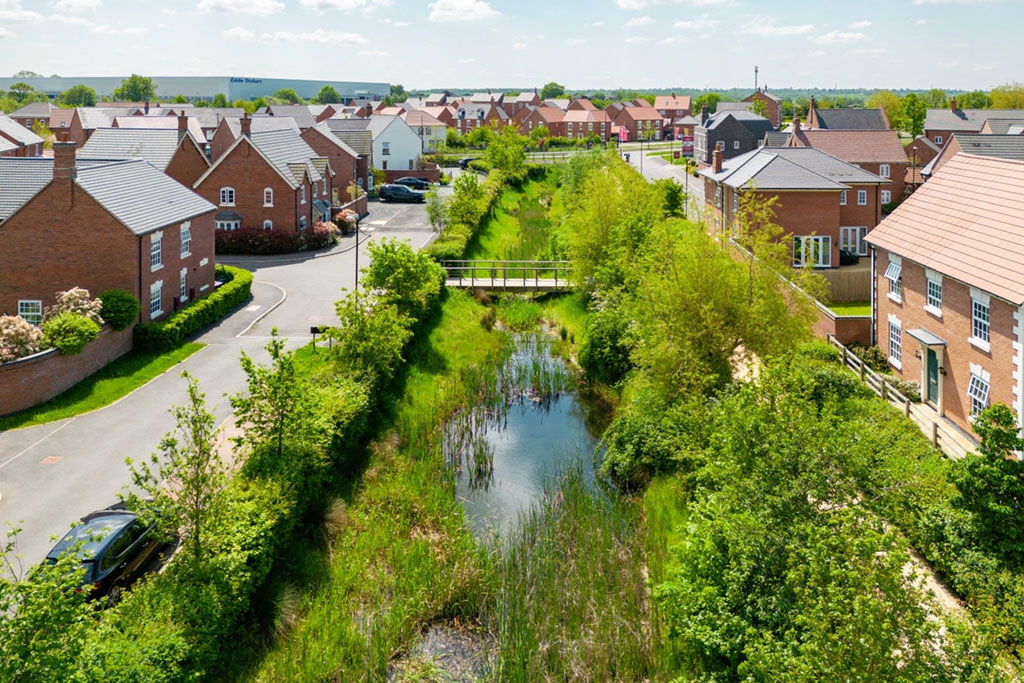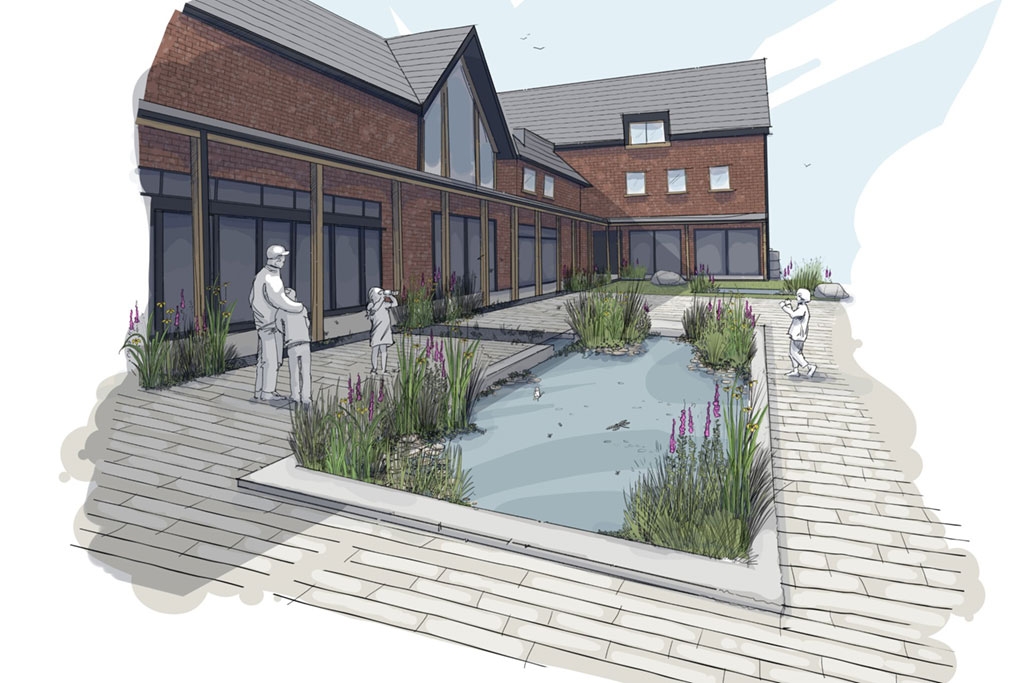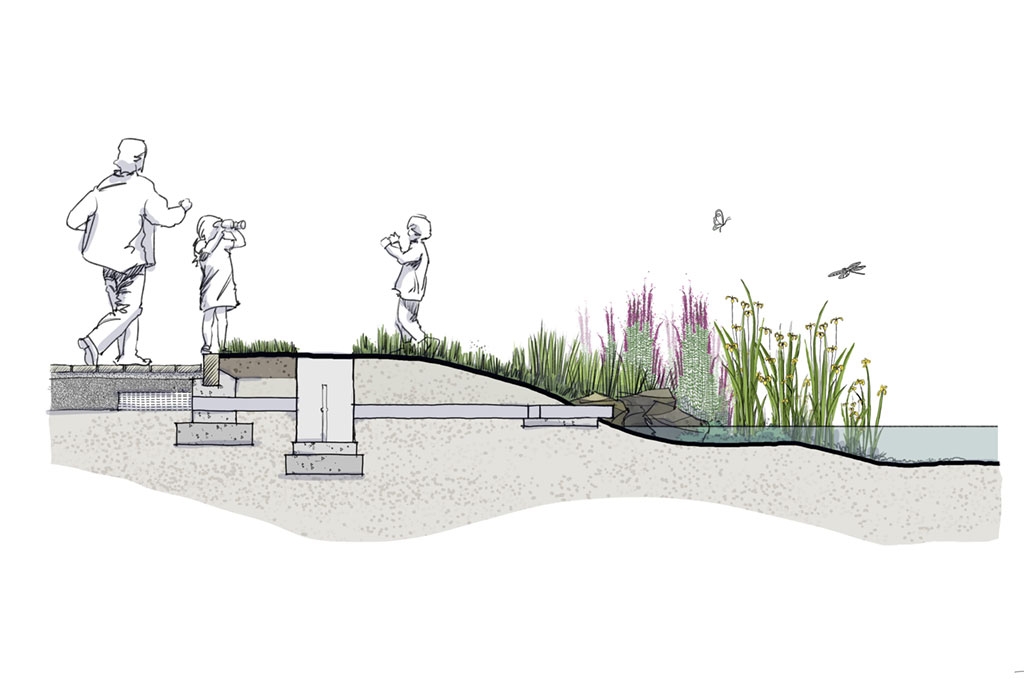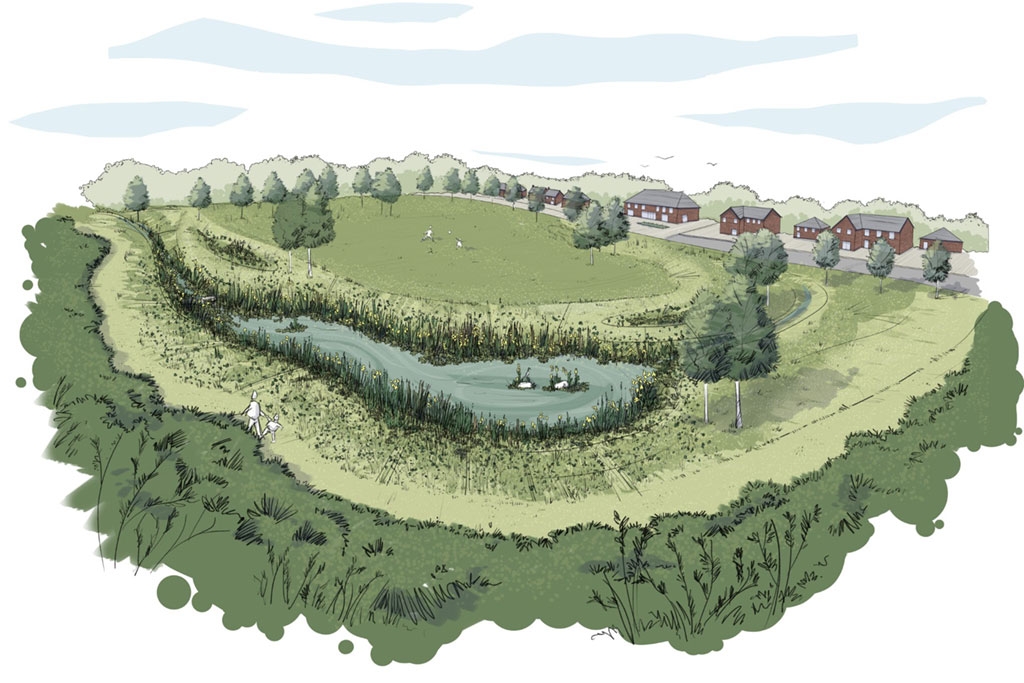Building wetlands into new communities
We’ve teamed up with Thakeham, a west Sussex-based housebuilder, to develop a guide that shows how wetlands can be built into housing developments from the start.

As the UK’s wetland experts, we at WWT know the nature-boosting, mood-lifting, flood-busting, water-purifying potential of these superpowered habitats.
But over the last 300 years the UK has lost approximately 75% of its inland wetlands. And right now, one in three people in the UK don’t have any blue or green space within a 15-minute walk of their front door.
Why do we need to work with water?
Wetlands are the spaces where water meets land – the ponds, rivers, streams and marshes on your doorstep. Where connections are made, and where people and wildlife thrive.
Wetlands provide a home to our precious wildlife and have amazing superpowers that can boost our mood and help in the fight against climate breakdown while reducing flooding and cleaning our water. These blue spaces create natural corridors between our homes, our work, our social lives and the wider economy.
Communities flourish with wetlands on their doorstep. And while houses may need concrete and bricks, a home needs so much moreide.
WWT’s Blue Infrastructure Design Guide
To help show how people and nature can thrive side by side, we’ve developed a Blue Infrastructure Design Guide for housebuilders. Working with the team at Thakeham, a west Sussex-based housebuilder focused on creating thriving and sustainable communities, the Design Guide offers best practice guidance on how to build wetlands into housing developments from the start.
We’ve used our own expertise in wetland creation, along with input from other housebuilding and wetland conservation practitioners, to show how wetlands designed to help nature thrive can also perform vital functions for the places people live.

Why should developers use the Blue Infrastructure Design Guide?
Alongside the extraordinary benefits for our wellbeing, blue infrastructure done well can provide a space for water, offering safe havens for wildlife, reducing flood risk in our communities and filtering our water.
By providing the best possible guidance to developers and house builders, we will unlock opportunities for creating wildlife rich habitats where people live and work.
This illustrated Design Guide shows how those planning to build new homes can maximise the benefits wetlands provide for both people and nature.
What’s in the Blue Infrastructure Design Guide?
The Design Guide includes everything you need to start thinking about putting wetlands at the heart of a development.
It explains the different types of wetlands that together make a thriving system of blue infrastructure, the benefits they can provide, as well as touching on issues of compliance, planting and maintaining wetlands as blue infrastructure.
We want this guide to act as a jumping off point for those seeking to bring nature closer to people’s homes, while harnessing all the other superpowers we know wetlands have.

Why WWT?
WWT directly manages over 6,900 hectares of wetland habitat in the UK. Through our work with government and partners, we are proving how bigger and more connected networks of wetlands near where people live and work, can sustain nature and provide a range of benefits for people.
If you are considering integrating wetlands into a development you are designing and would like advice from WWT’s experts, please get in touch with us.
